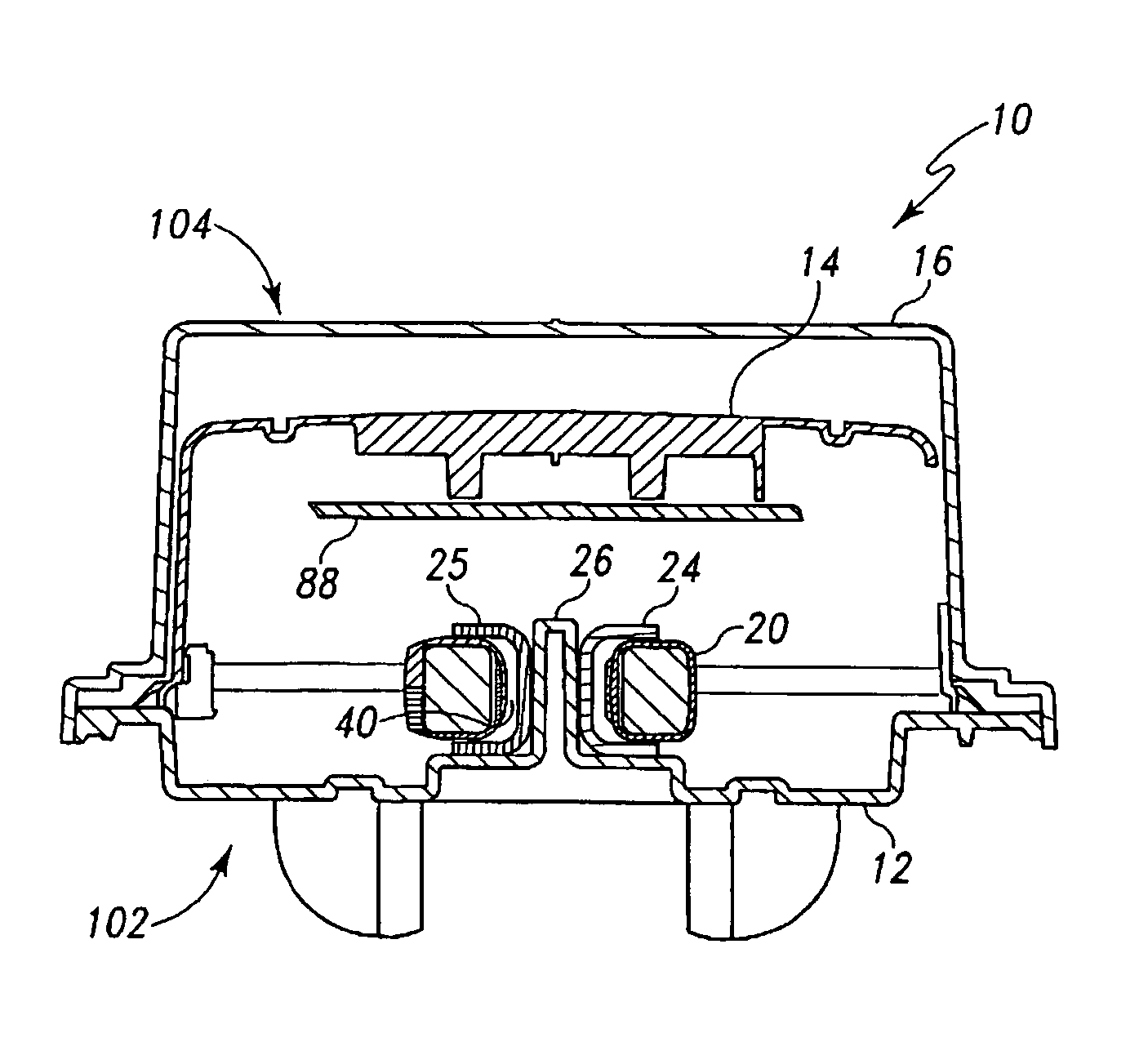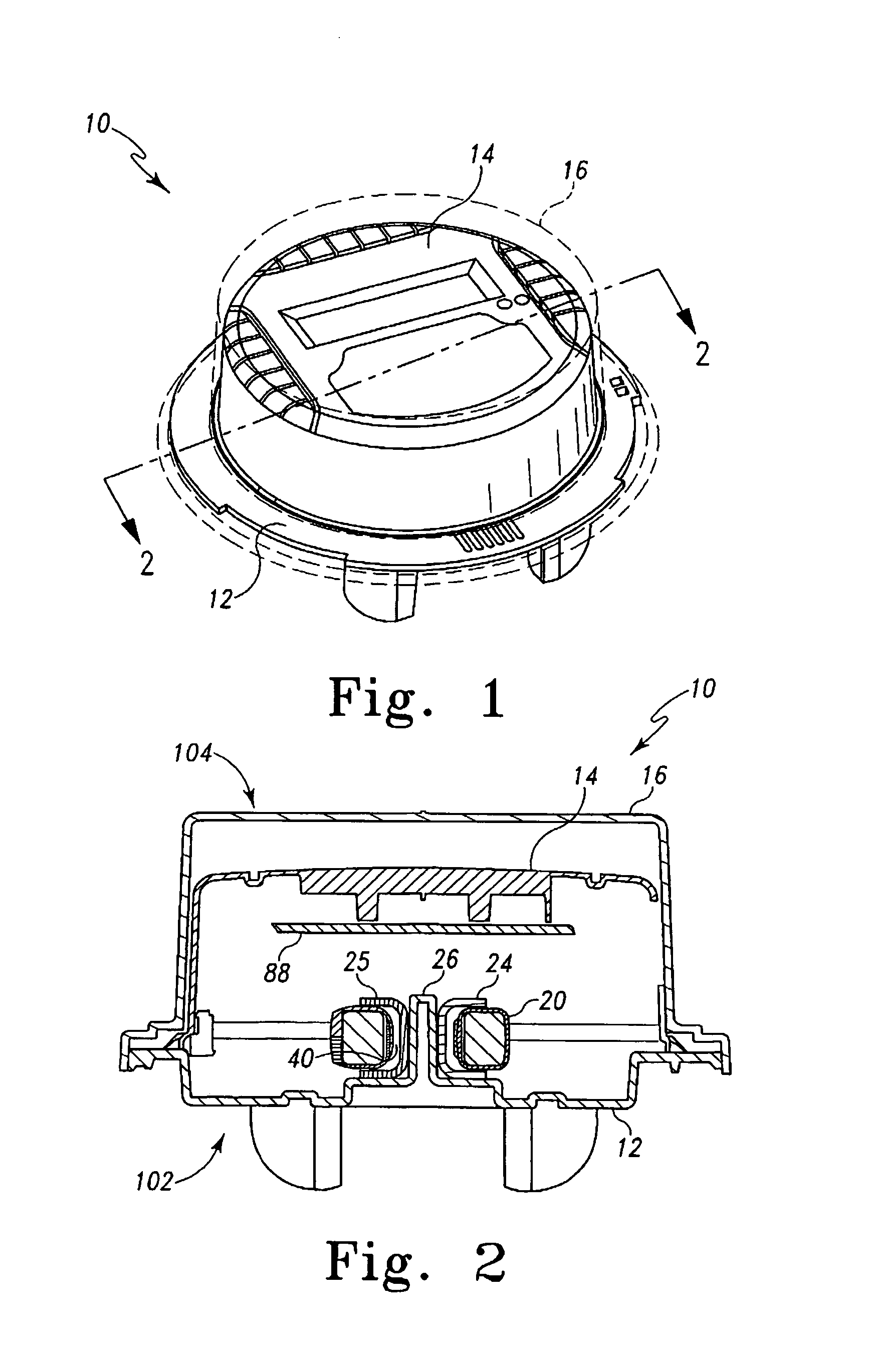Method and arrangement for securing sensors in an electricity meter
a technology for electrical components and electricity meters, applied in transformers/inductance details, voltage/current isolation, instruments, etc., can solve the problems of labor and cost associated with assembling electricity meters, limiting factors in the cost of electricity meters, and complex bolt terminals or solder connections, etc., to achieve the effect of eliminating or eliminating
- Summary
- Abstract
- Description
- Claims
- Application Information
AI Technical Summary
Benefits of technology
Problems solved by technology
Method used
Image
Examples
Embodiment Construction
[0034]Referring now to FIGS. 1 and 2, there is shown an exemplary embodiment of an electric utility meter 10 which incorporates the features of the present invention therein. The electric utility meter 10 in the embodiment described herein is a residential meter having an electronic measurement circuit and an electronic display. However, it will be appreciated that many of the inventive aspects described herein may readily be adapted for use in polyphase meters used for non-residential purposes.
[0035]In general, the electric utility meter 10 has a housing that comprises a lower housing 12, an upper housing 14 and a cover 16. The lower housing 12 supports a sensor circuit 18 that attaches to a standard meter socket, not shown (see socket 19 of FIG. 2a). The upper housing 14 supports a circuit board 88 and a liquid crystal display (“LCD”) 74 (see FIGS. 9 and 10). The circuit aspects of the meter 10 are shown schematically in FIG. 2a.
[0036]The sensor circuit 18 is a circuit operable t...
PUM
 Login to View More
Login to View More Abstract
Description
Claims
Application Information
 Login to View More
Login to View More - R&D
- Intellectual Property
- Life Sciences
- Materials
- Tech Scout
- Unparalleled Data Quality
- Higher Quality Content
- 60% Fewer Hallucinations
Browse by: Latest US Patents, China's latest patents, Technical Efficacy Thesaurus, Application Domain, Technology Topic, Popular Technical Reports.
© 2025 PatSnap. All rights reserved.Legal|Privacy policy|Modern Slavery Act Transparency Statement|Sitemap|About US| Contact US: help@patsnap.com



